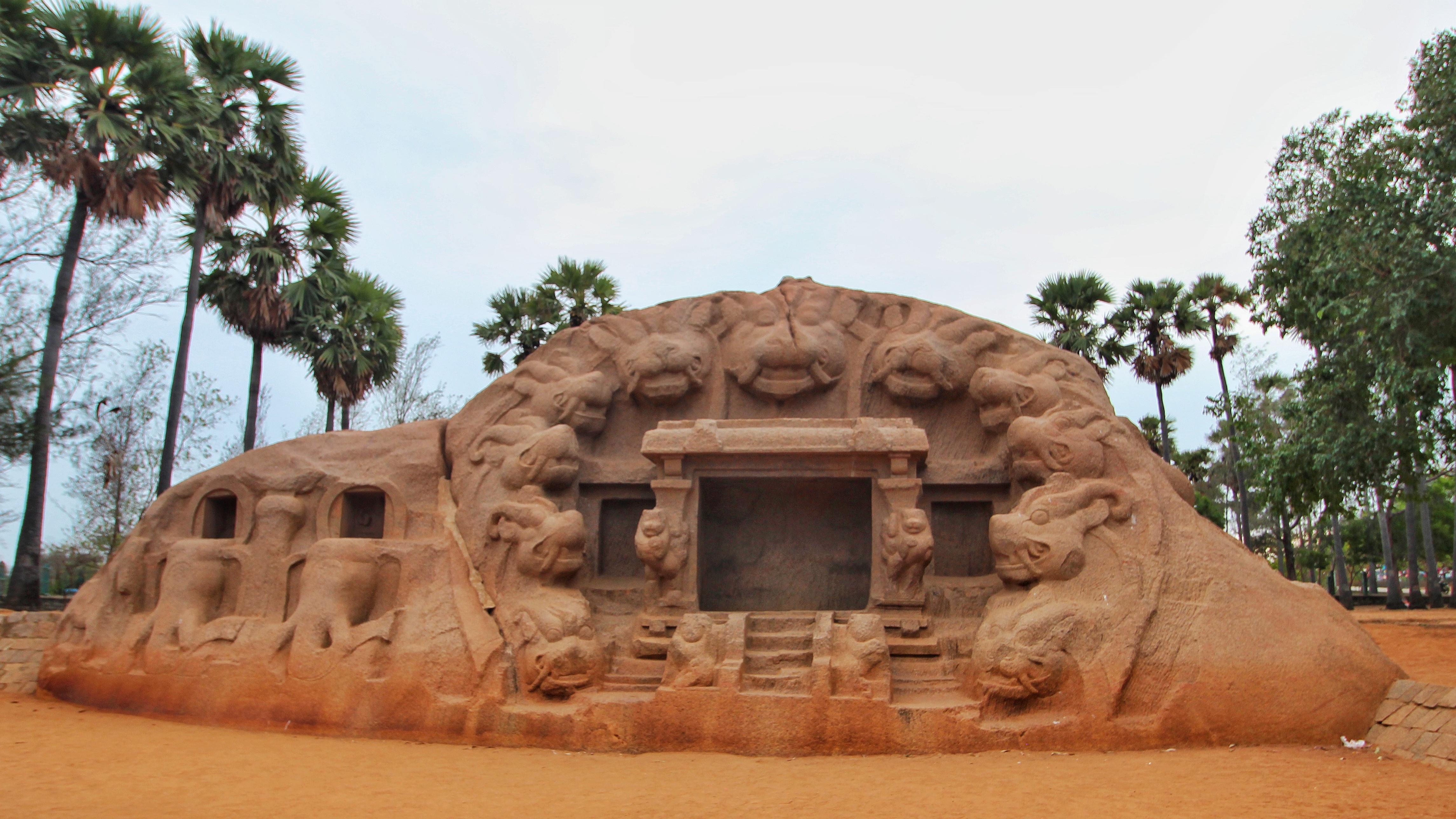|
Saluvankuppam
Saluvankuppam, also spelt as Salavankuppam or Saluvanakuppam, is a coastal hamlet in the Chengalpattu district of Tamil Nadu, India. It is situated on the East Coast Road at a distance of 7 kilometres from Mahabalipuram on the Chennai-Mahabalipuram stretch. The Tiger Cave, which forms a part of the UNESCO World Heritage Site of Mahabalipuram is located here. The recently unearthed Murugan Temple close to Tiger Cave is also located here. The hamlet along with its surroundings house a number of resorts and is a popular tourist destination. History The places in and around Saluvankuppam are known to have been inhabited since the early centuries of the Common era. Earlier known as Thiruvizhchil, the town was renamed as "Saluvankuppam" during Vijayanagar period after the Saluva king Saluva Narasimha Deva Raya Saluva Narasimha Deva Raya (or Saluva Narasimha, Saluva Narasimha I; 1431–1491 CE) was an emperor of the Vijayanagara Empire from the Saluva Dynasty. A patron of the ... [...More Info...] [...Related Items...] OR: [Wikipedia] [Google] [Baidu] |
Murugan Temple, Saluvankuppam
The Murugan Temple at Saluvankuppam, Tamil Nadu, India, is a shrine dedicated to Tamil Hindu deity Murugan. Archaeologists believe that the shrine, unearthed in 2005, consists of two layers: a brick temple constructed during the Sangam period (the 3rd century BCE to the 3rd century CE) and a granite Pallava temple dating from the 8th century CE and constructed on top of the brick shrine making it the oldest temple in india. The Archaeological Survey of India (ASI) team which conducted the excavation believe that brick temple could be the oldest of its kind to be discovered in Tamil Nadu. The temple was discovered by a team of archaeologists from the ASI based on clues found in a rock inscription left exposed by the 2004 Indian Ocean tsunami. Initially, excavations revealed an 8th-century Pallava-era shrine. Further excavations revealed that the 8th-century shrine had been built on the brick foundation of an earlier shrine. The brick shrine has been dated to the Sangam perio ... [...More Info...] [...Related Items...] OR: [Wikipedia] [Google] [Baidu] |
Tiger Cave (India)
The Tiger Cave is a rock-cut Hindu temple complex located in the hamlet of Saluvankuppam near Mahabalipuram in Tamil Nadu, India. It gets its name from the carvings of tiger heads on the mouth of a cave which forms a part of the complex. The Tiger Cave is considered to be one of the Mahabalipuram rock-cut temples constructed by the Pallavas in the 8th century AD. The site is located on the Bay of Bengal coast and is a popular picnic spot and tourist destination. The temple is maintained by the Archaeological Survey of India (ASI). The discovery of an inscription on a rocky outcrop in the Tiger Cave complex in 2005 led to the excavation of a Sangam period Muruga Temple close by. Architecture The cave temple is located away from Mahabalipuram, a world heritage site for the Group of Monuments at Mahabalipuram The Group of Monuments at Mahabalipuram is a collection of 7th- and 8th-century CE religious monuments in the coastal resort town of Mahabalipuram, Tamil Nadu, India and i ... [...More Info...] [...Related Items...] OR: [Wikipedia] [Google] [Baidu] |
Tiger Cave Mamallapuram
The tiger (''Panthera tigris'') is the largest living cat species and a member of the genus ''Panthera''. It is most recognisable for its dark vertical stripes on orange fur with a white underside. An apex predator, it primarily preys on ungulates, such as deer and wild boar. It is territorial and generally a solitary but social predator, requiring large contiguous areas of habitat to support its requirements for prey and rearing of its offspring. Tiger cubs stay with their mother for about two years and then become independent, leaving their mother's home range to establish their own. The tiger was first scientifically described in 1758. It once ranged widely from the Eastern Anatolia Region in the west to the Amur River basin in the east, and in the south from the foothills of the Himalayas to Bali in the Sunda Islands. Since the early 20th century, tiger populations have lost at least 93% of their historic range and have been extirpated from Western and Central Asia, the ... [...More Info...] [...Related Items...] OR: [Wikipedia] [Google] [Baidu] |



